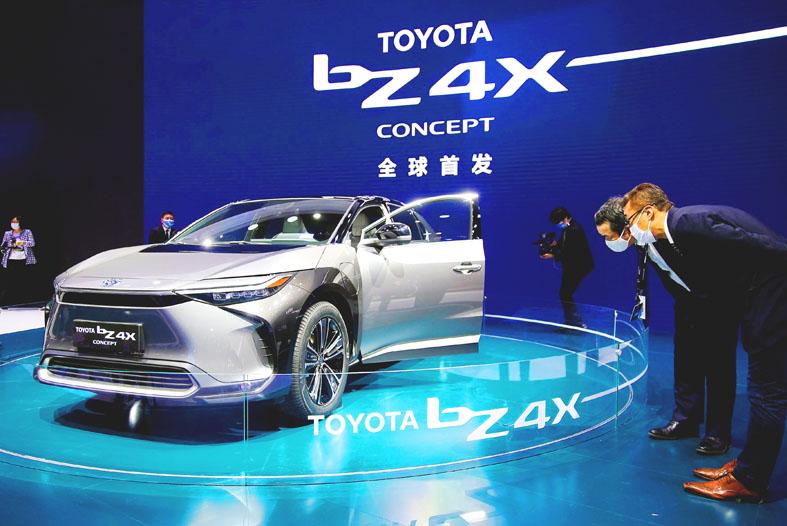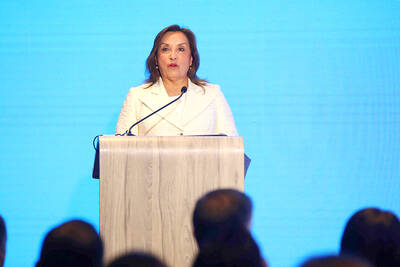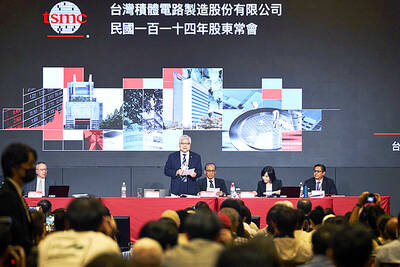Toyota Motor Corp is to launch an all-electric small sedan in China late next year, having turned to local partner BYD Co (比亞迪) for key technology to finally make an affordable yet roomy runaround, four sources said.
Two of the four people with knowledge of the matter described the car as an electric holy grail for Toyota, which has struggled for years to come up with a small electric vehicle (EV) that is competitive on cost in China and does not compromise on comfort.
The sources said the breakthrough was chiefly down to BYD’s less bulky lithium-iron-phosphate (LFP) Blade batteries and its lower-cost engineering know-how — a turning of the tables for a Chinese company whose popular F3 saloon was inspired by Toyota’s Corolla back in 2005.

Photo: Reuters
Little known outside China at the time, BYD, or “Build Your Dreams,” hit the headlines in 2008 when Warren Buffett bought a 10 percent stake and it has since become one of the biggest manufacturers of so-called new energy vehicles in the world.
Toyota’s new EV would be slightly bigger than its compact Corolla, the world’s best-selling car of all time.
It is to be unveiled as a concept car at the Beijing auto show in April and will then most likely be launched as the second model in Toyota’s new bZ series of all-electric cars, even though it will only be on sale in China for now.
“The car was enabled by BYD battery technology,” one of the sources said. “It has more or less helped us resolve challenges we had faced in coming up with an affordable small electric sedan with a roomy interior.”
It would be pitched below premium EVs, such as Tesla’s Model Y or the Nio ES6, but above the ultra-cheap Hong Guang Mini EV, which starts at just US$4,500 and is now China’s best-selling EV.
Two of the four sources, all of whom declined to be named because they are not authorized to speak to the media, said the new Toyota would be priced competitively.
One said it would likely sell for under 200,000 yuan (US$31,400), aiming for a segment of the Chinese market Tesla is expected to target with a small car within the next two years.
“We don’t comment on future products,” a Toyota spokesperson said. “Toyota considers battery electric vehicles as one path to help us get to carbon neutrality and is engaged in the development of all types of electrified vehicle solutions.”
A BYD spokesperson declined to comment.
Two of the sources said the BYD evaluations pushed Toyota to create its research and development (R&D) joint venture with BYD last year. Toyota now has two dozen engineers in Shenzhen working side-by-side with about 100 BYD counterparts.
BYD officially launched its Blade battery last year.
LFP batteries have a lower energy density than most other lithium-ion cells, but are cheaper, have a longer shelf-life, are less prone to overheating and do not use cobalt or nickel. Tesla already uses LFP batteries in its Model 3 and Model Y in China.

With an approval rating of just two percent, Peruvian President Dina Boluarte might be the world’s most unpopular leader, according to pollsters. Protests greeted her rise to power 29 months ago, and have marked her entire term — joined by assorted scandals, investigations, controversies and a surge in gang violence. The 63-year-old is the target of a dozen probes, including for her alleged failure to declare gifts of luxury jewels and watches, a scandal inevitably dubbed “Rolexgate.” She is also under the microscope for a two-week undeclared absence for nose surgery — which she insists was medical, not cosmetic — and is

CAUTIOUS RECOVERY: While the manufacturing sector returned to growth amid the US-China trade truce, firms remain wary as uncertainty clouds the outlook, the CIER said The local manufacturing sector returned to expansion last month, as the official purchasing managers’ index (PMI) rose 2.1 points to 51.0, driven by a temporary easing in US-China trade tensions, the Chung-Hua Institution for Economic Research (CIER, 中華經濟研究院) said yesterday. The PMI gauges the health of the manufacturing industry, with readings above 50 indicating expansion and those below 50 signaling contraction. “Firms are not as pessimistic as they were in April, but they remain far from optimistic,” CIER president Lien Hsien-ming (連賢明) said at a news conference. The full impact of US tariff decisions is unlikely to become clear until later this month

GROWING CONCERN: Some senior Trump administration officials opposed the UAE expansion over fears that another TSMC project could jeopardize its US investment Taiwan Semiconductor Manufacturing Co (TSMC, 台積電) is evaluating building an advanced production facility in the United Arab Emirates (UAE) and has discussed the possibility with officials in US President Donald Trump’s administration, people familiar with the matter said, in a potentially major bet on the Middle East that would only come to fruition with Washington’s approval. The company has had multiple meetings in the past few months with US Special Envoy to the Middle East Steve Witkoff and officials from MGX, an influential investment vehicle overseen by the UAE president’s brother, the people said. The conversations are a continuation of talks that

CHIP DUTIES: TSMC said it voiced its concerns to Washington about tariffs, telling the US commerce department that it wants ‘fair treatment’ to protect its competitiveness Taiwan Semiconductor Manufacturing Co (TSMC, 台積電) yesterday reiterated robust business prospects for this year as strong artificial intelligence (AI) chip demand from Nvidia Corp and other customers would absorb the impacts of US tariffs. “The impact of tariffs would be indirect, as the custom tax is the importers’ responsibility, not the exporters,” TSMC chairman and chief executive officer C.C. Wei (魏哲家) said at the chipmaker’s annual shareholders’ meeting in Hsinchu City. TSMC’s business could be affected if people become reluctant to buy electronics due to inflated prices, Wei said. In addition, the chipmaker has voiced its concern to the US Department of Commerce